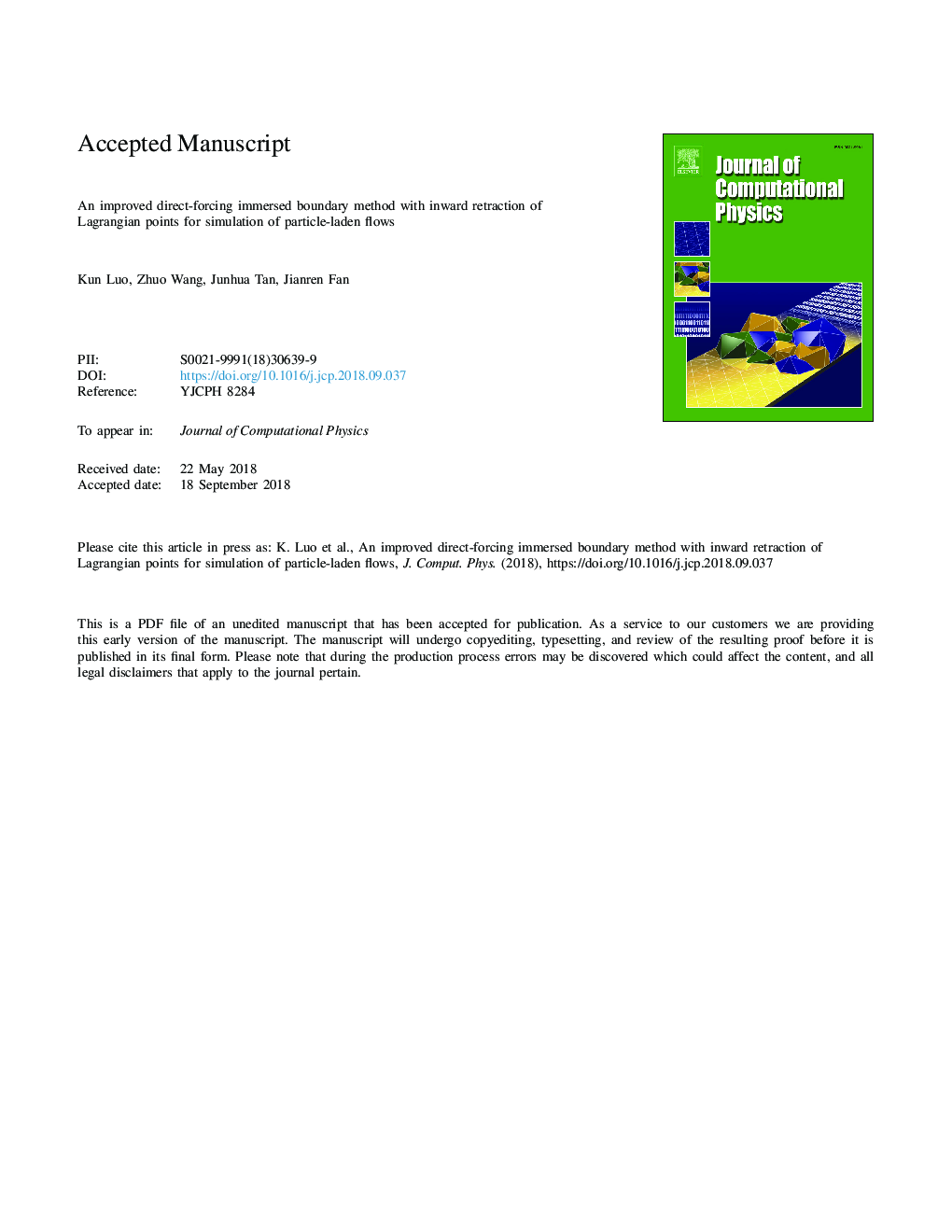| Article ID | Journal | Published Year | Pages | File Type |
|---|---|---|---|---|
| 11023888 | Journal of Computational Physics | 2019 | 46 Pages |
Abstract
The direct-forcing immersed boundary is widely adopted to study particle-laden flows. The effective hydrodynamic diameter of the particle is much or less overestimated by the original immersed boundary method, depending on the particle Reynolds number and grid resolution. In this paper, we propose an improved method to dynamically correct the effective hydrodynamic diameter by retracting inward the Lagrangian points to varying distances. The retraction distance is determined by querying a function fitted in this paper. The improved method is tested and validated by several cases, including falling of a spherical particle under gravity, the uniform flow past two stationary particles and the drafting-kissing-tumbling phenomenon of two settling particles. It turns out the improved method not only provides better results for the drag force but also predicts the flow field more accurately. What's more, due to the insensitivity to grid resolution, the improved method is suitable for simulating large-scale fluid-particle systems such as fluidized bed, which are computationally expensive.
Related Topics
Physical Sciences and Engineering
Computer Science
Computer Science Applications
Authors
Kun Luo, Zhuo Wang, Junhua Tan, Jianren Fan,
